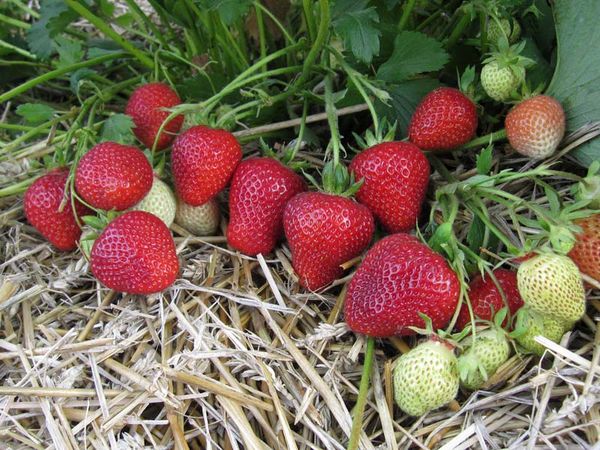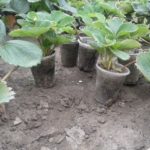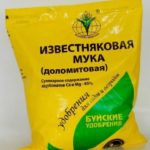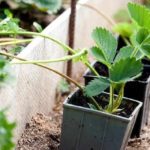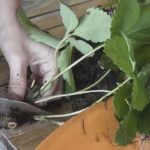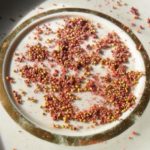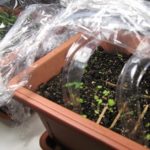The period of fruiting of many types of strawberries is quite short, not giving enough to enjoy strawberry aroma and delicate flavor. Therefore, many people combine the cultivation of early berries with late-ripening varieties. The quality of their fruits is not inferior, and in some cases exceeds the June harvest. These include strawberries Florence.
Table of contents
Description of the strawberry variety Florence
A new variety was bred by UK breeders at an experimental station in East Molling. Florence is characterized by late fruiting, high yield. The plant forms a powerful, but not sprawling shrub with lots of whiskers.
Leaves are dark green glossy. Peduncles pulled out above the level of the leaf, which makes it convenient to process the bushes from pests and diseases. The berries according to the description have a beautiful conical shape and rich red color.
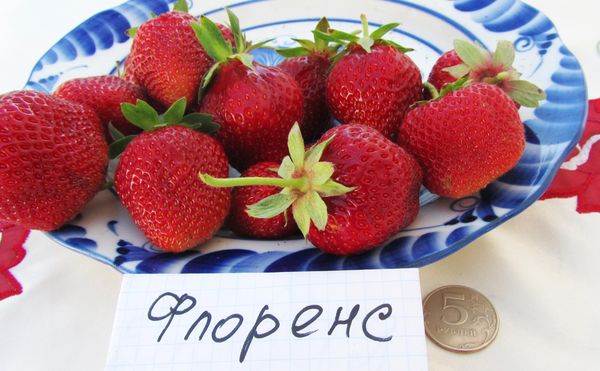
The plant develops normally both in greenhouses and in the open field. The root system is resistant to various diseases. On berries, spots and fungus are extremely rare. Culture loves moderate heat, does not tolerate a hot climate.
Frost resistance allows growing strawberries even in the northern regions. Tubers easily tolerate winter, one has only to properly prepare the bed for frost.
The beginning of the culture ripening - from the second half of June to the end of July. The period of fruiting depends on the care and climatic conditions, on average lasts 3-4 weeks. The yield on farms reaches 35 tons per 1 hectare, which is about 1 kg per bush.
Characteristics of berries
The elite strawberry variety Florence differs from other representatives of strawberry in a beautiful cone-shaped large berry, the weight of which reaches 35-60 g. The sweet red flesh tastes sweet with a delicate hint of sourness.
Fruits can be eaten raw and after heat treatment (jam, jam, jam). Harvesting for the winter with the help of freezing does not reduce the beneficial qualities of the berry.
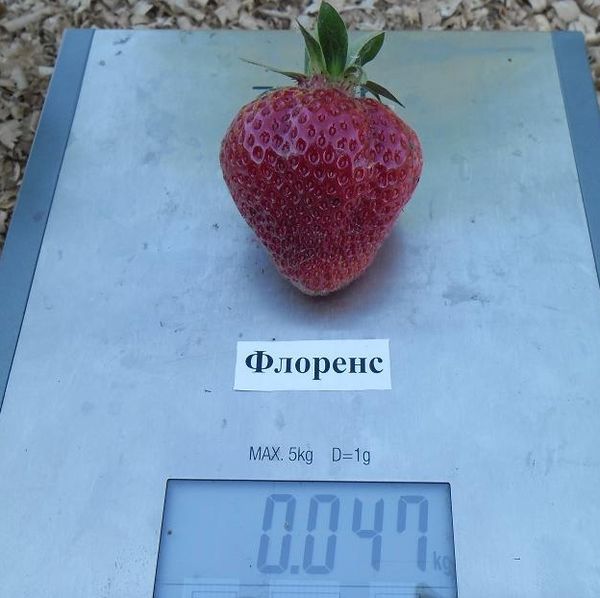
Florence is well preserved, during transportation does not lose presentability. Without mechanical impact or damage does not let the juice. This allows farmers to deliver strawberries to distant regions without losing the presentation.
To preserve the fruits for a long time, the collection is recommended to be carried out in dry weather. after noon (in the evening).
Breeding history and region of growth
Hybrid obtained by crossing popular varieties Wima-Tarda and Vicodathat makes up a good pedigree.English breeders for a long time worked on the cultivation of high-yielding strawberries of the late fruiting period for industrial and dessert purposes.
One of the main goals was to achieve strong immunity. In 1997, their labors were crowned with success. The rightholder is HRI East Malling.
On clay plots it is also possible to grow Florence, but subject to timely fertilization of the soil (with humus) and irrigation.
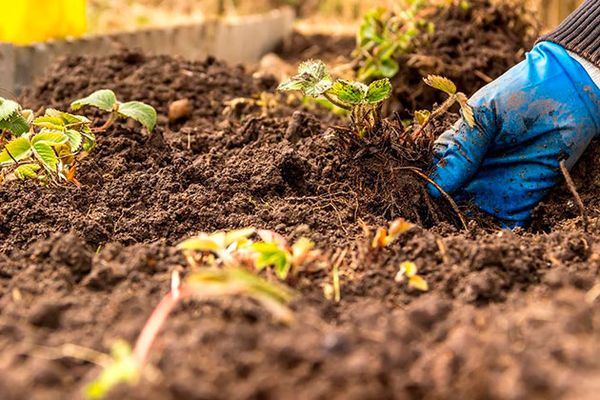
Advantages and disadvantages
Each variety has its primary qualities and nuances of growing technology. To avoid unpleasant surprises during planting, care or picking strawberries, you should be familiar with the advantages and disadvantages.
Advantages of Florence:
- does not require frequent updating of beds, the bush maintains quality in one place more than 5 years;
- berry of large size, beautiful regular shape and pronounced taste;
- for a long time retains its presentation, easily transfers transportation;
- when frozen does not lose its properties;
- the culture is resistant to weather disasters (survives in the heat, with prolonged rains);
- versatility of the variety (suitable for cultivation in open fields and in greenhouse conditions);
- Strawberries are resistant to many diseases.
Disadvantages:
- when planting you need to observe some features;
- culture Demanding to bait;
- frequent rains badly affect the vegetative activity of the plant.
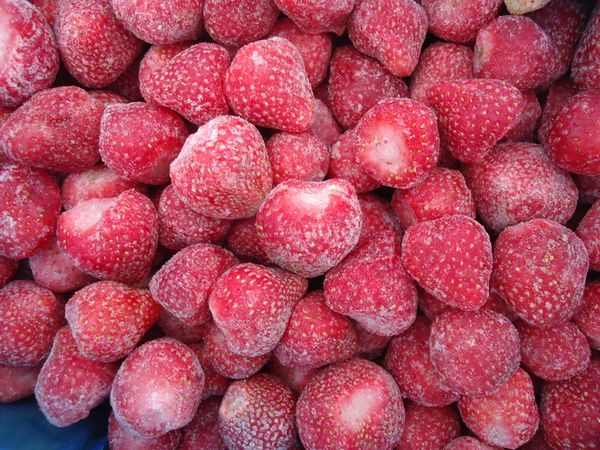
Requirements for planting seedlings
It is better to choose young seedlings in separate pots. Such instances with a closed root system will quickly adapt to new conditions and take root.
Tubers can be planted in spring and autumn, but the ideal time is considered to be the beginning of September, when there is no frost at night. If planting is done in the spring, it is necessary to cover the bushes with geotextile at night.
For strawberries, you need to choose a plot on a hill, so that ground water and heavy rains do not provoke root rot.
Preparation of beds begins with digging the soil. It follows remove old roots and weeds, as well as trash. Any strawberry variety loves nutritious soil, so a month before planting it is injected with fertilizers (organic matter, mineral bait).
- Seedlings are better to choose in separate cups
- Dolomite flour should be applied as a fertilizer before planting.
Before planting, the surface of the site falls down. dolomite flour for deoxidation. After processing, the land is settled for a couple of days. It is necessary for stabilization of soil processes and enrichment with nutrients.
The size of the formed bushes is considerable, because the holes are planned at a distance 30-35 cm from each other.
In a prepared hole with a depth of 10-15 cm, a small mound should be made and a seedling should be installed on it. The root neck should be flush with the ground surface. On top of the bush is laid mulch. The landing is completed with abundant watering.
Care rules
It is easy to care for a variety of Florence, the plant does not require special treatment. But there are some nuances.
Watering
Watering should be regular with varying intensity for each stage of development.
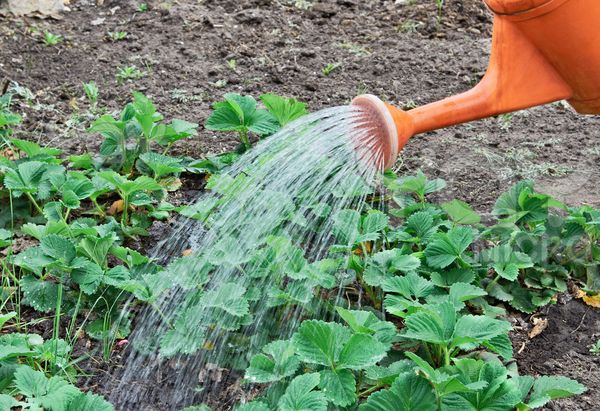
After planting seedlings watered every 3 days. At 1m2 about 10 liters will be required. After full adaptation, the interval between irrigations increases to 1 week. But it is necessary to adhere to the regulatory indicators in this matter.
Several factors affect the regularity of watering:
- soil type;
- weather;
- availability of mulch or special shelter from agrofibre.
During the flowering period, moisture is especially necessary for the plant. And at the initial stage of fruiting irrigation is reduced. It is enough to water the beds 1 time per week, or even two. Periodically check the condition of the ground in order to prevent it from drying out. With abundant watering in the process of fruit ripening strawberries lose taste.
After harvesting, cropped bushes should be moderately moisturized until the end of the season. This will help the tubers survive the winter.
Flooding irrigation varieties recommended method sprinkling or using the system drip irrigation.
Lure
For the normal development of the tuber to fertilize should regularly. In the spring at the beginning of the season it will be appropriate to use nitrogen, which improves the formation of the aerial parts. When buds and ovaries appear, it is time to introduce phosphorus and potassium based bait.
The season ends with the feeding of the soil with humus or fermented manure. So the roots get stronger and gain strength before wintering.
Preparing for the winter
One of the important stages of the preparatory work is considered hilling followed by mulching. To loosen the soil should be in early September, and you can mulch a month later.
Survive the cold winter and temperature changes will help shelter of agrofibre. It can be replaced by peat (straw), lined with a thick layer over the cropped bushes. If the region is characterized by a warm climate, then there is no need for a protective layer.

When processing the site should inspect each bush in order to remove damaged branches or shoots.
Under favorable conditions, strawberry florence will bear fruit in the first season after the fall landing. In the second year, the fruits will appear on the bushes, even if the development was accompanied by bad weather.
Breeding methods
Florence variety strawberries are propagated in the usual ways characteristic of strawberry species: by rooting a mustache, dividing a bush, and seeds.
Most often, gardeners use the vegetative method - child rosettes. Selected quality whiskers are fixed into the soil with curved wires or cut and placed in peat.
After 2-4 weeks, the root will appear, after which the shoot can be planted in open ground or a separate pot.
- Reproduction by child rosettes
- Dividing bush
Among the simple and affordable methods of propagation of culture - bush dividing. A healthy plant that has reached 3-4 years of age is selected. The spine is cut into several parts and planted in the garden. The cut is treated with ash or a solution of potassium permanganate. Also used clay dipping.
Breeding method seeds longer and time consuming. When using it, it is difficult to predict the quality of the seedlings obtained.
The bottom line is to dry the skin fragments with pulp for the subsequent production of seeds. Then they are sown by grooves in a box with a substrate (soil + peat + humus) and moistened by spraying. The top of the container is covered with film or glass.
When the shoots formed 2-3 leaves, you need to seed them in separate pots. When a 5-6 leaf appears on a sprout, you can prepare seedlings for planting on open ground.
- During reproduction, seeds are extracted from the dried pulp.
- After germinated in the ground
- With the appearance of 2-3 leaves, you must dive
Diseases and pests
In general, Florence strawberries are resistant to various diseases, but you should not relax. Under adverse conditions, the plant can get sick, which immediately becomes noticeable by modified appearance. Delay treatment is not worth it, otherwise the bush will die.
Verticillosis
Verticillosis is the most dangerous diseaseable to destroy most of the bushes.
The essence of the problem lies in the defeat of the vascular system of the plant with dangerous spores.The bush for a short time sags, the leaves turn yellow and fall off. A dark ring is formed on the root neck.
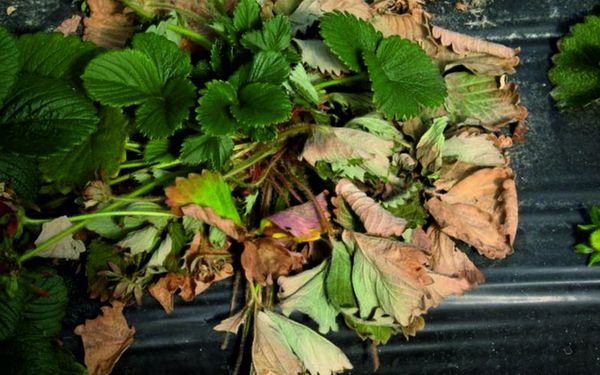
After that, the beds are sprayed with a special solution. Popular drugs such drugs: Benorad, Fundazol. It is possible to prevent the disease by treating seedlings before planting with a solution of potassium permanganate and periodic cleaning of beds from damaged branches and leaves.
Mealy dew
Powdery mildew formed due to the combination of warm temperature and high humidity.
The foliage is covered with white dot spots like dust, the antennae die off, the berries begin to rot.

You need to start treatment with cleaning beds from affected parts bush. After that, the plants are sprayed with a solution of whey, water and iodine.
Also for the treatment can use special preparations. Prevention consists in moderate watering and keeping the distance between tubers.
Gray rot
Gray rot is characterized by the presence of brown spots on foliage and fruits, drying the plants and berries.For treatment, treatment with plants is recommended: Fundazol, Teldor, Bayleton.
Some unpretentiousness of strawberries does not mean that it will bear fruit without proper care. But the efforts and labors will be rewarded with a bountiful harvest. Having once tasted the English beauty, it is impossible to forget the aftertaste.
